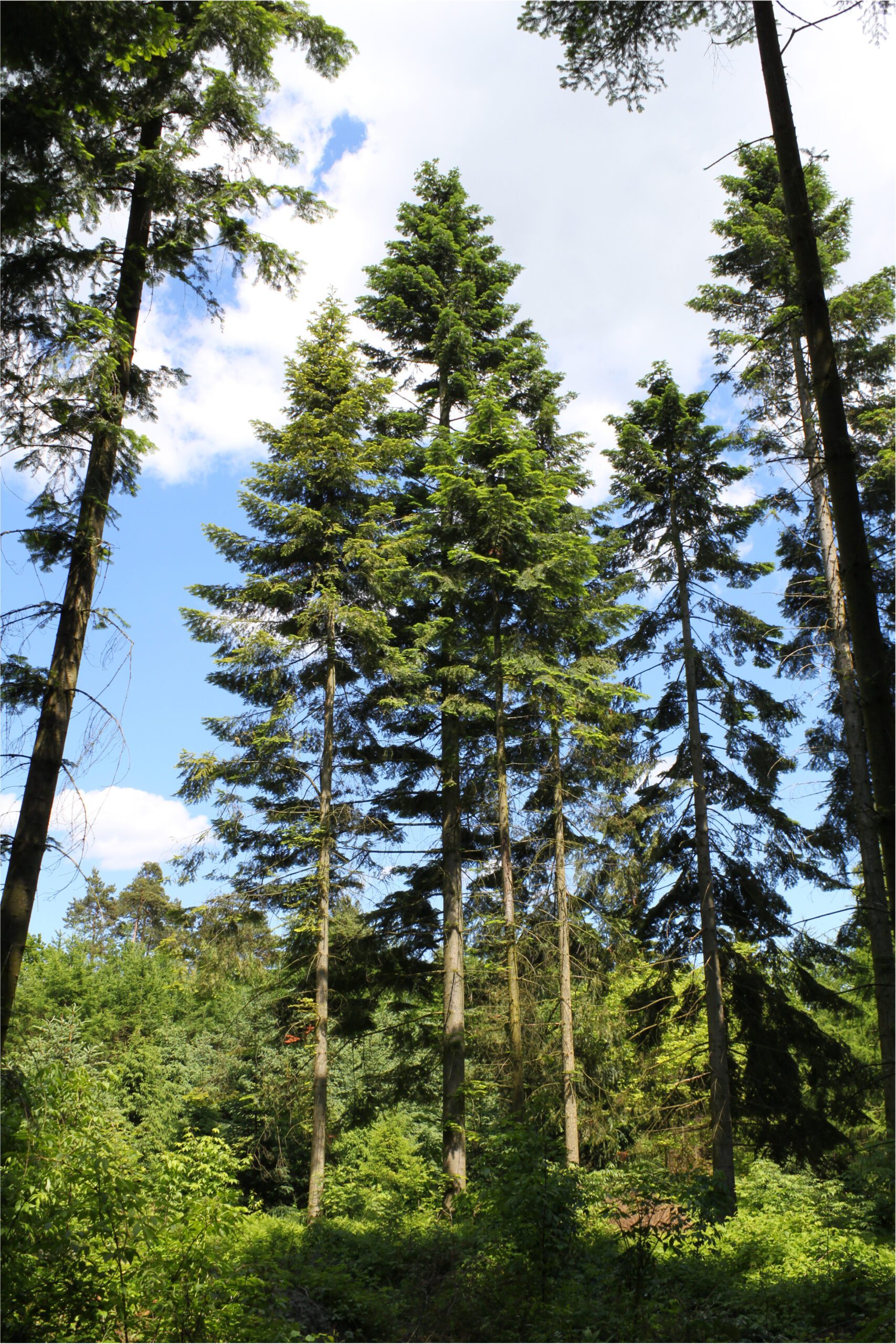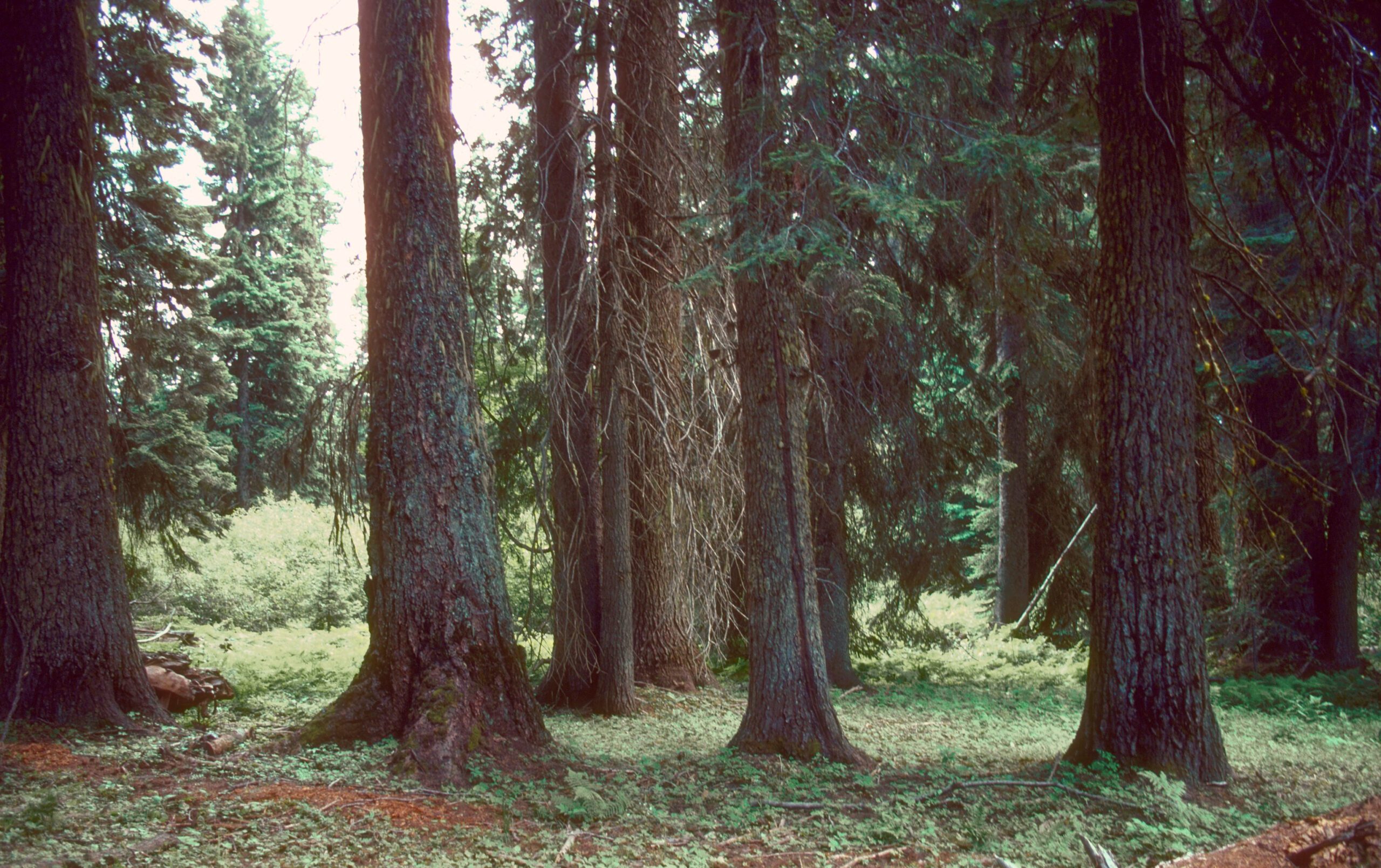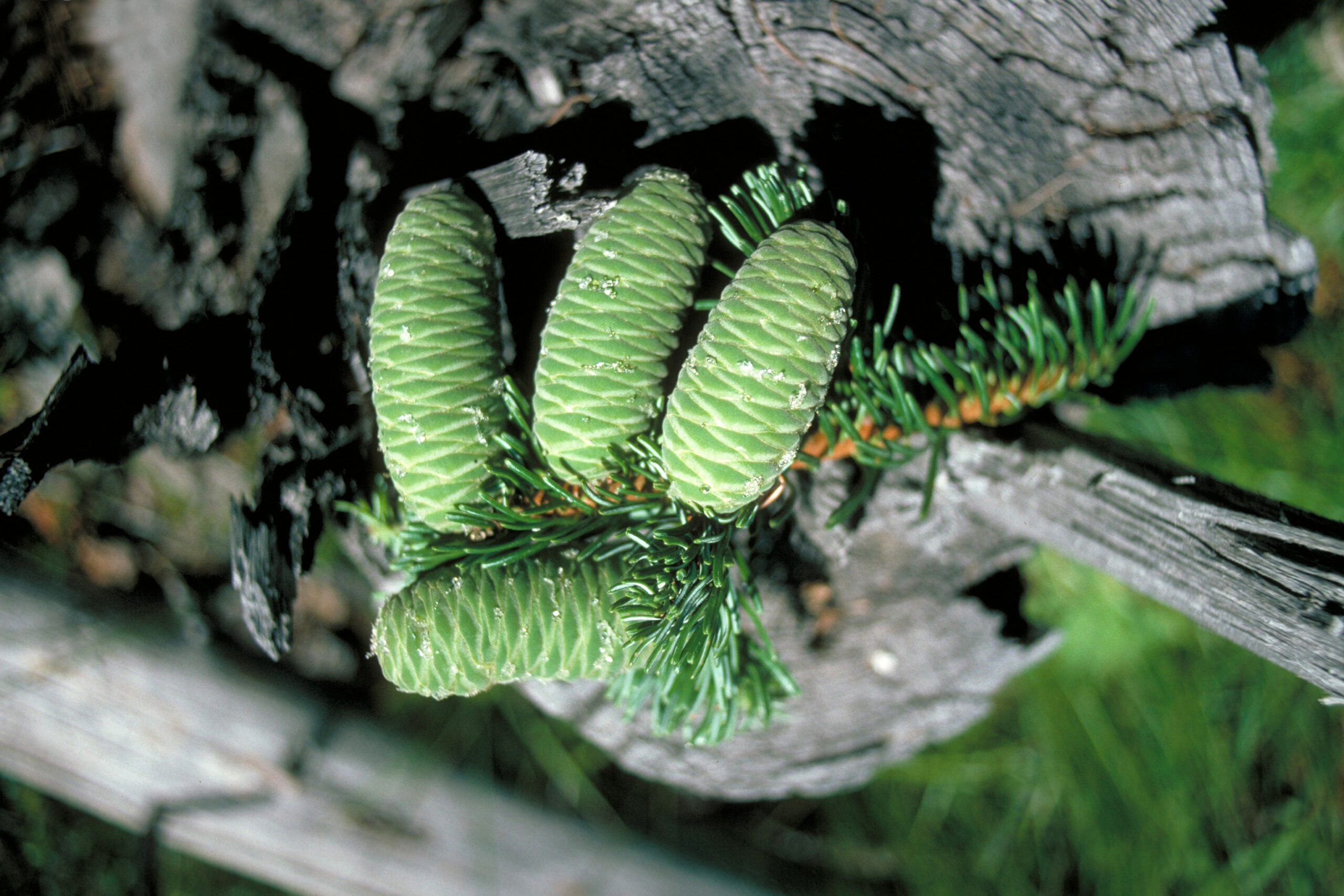Victoria, B.C., is renowned for its lush green spaces and vibrant natural beauty, making it a haven for homeowners and landscaping enthusiasts. Among the diverse tree species that thrive in this region, the Grand Fir (Abies grandis) stands out for its impressive height, distinctive foliage, and aromatic scent. This article explores the fascinating world of the Grand Fir, delving into its unique characteristics, suitability for Victoria’s climate, and practical tips for planting and care.
 Crusier, CC BY-SA 3.0 , via Wikimedia Commons[/caption]
Crusier, CC BY-SA 3.0 , via Wikimedia Commons[/caption]
Description: Tall Grand fir trees (Abies grandis) thriving in their natural habitat, ideal for articles on Victoria tree care or environmental conservation.
A Glimpse into the Past
The Grand Fir, native to the temperate rainforests of Northwestern North America, has a rich history intertwined with the indigenous cultures of the Pacific Northwest. Historically, the wood of the Grand Fir was utilized by Native American tribes, particularly the Coast Salish, for various construction purposes. The bark was used to cover lodges, and the tree’s needles were employed in traditional medicinal practices. This historical significance adds a layer of cultural depth to the tree’s already impressive profile.
A Botanical Marvel: Distinctive Features
The Grand Fir is a botanical marvel, boasting several distinctive features that make it a standout species:
- Height and Spread: The Grand Fir can reach towering heights of 40 to 70 meters, with a spread of 12 to 18 meters, making it one of the tallest fir species.
- Bark: When young, the bark is smooth and gray, gradually becoming rough, ridged, and dark brown as the tree ages.
- Leaves: The glossy dark green, needle-like leaves are flattened and range from 2 to 4.5 cm long. A unique characteristic is the presence of two white bands on the underside of each needle, which emit a citrus-like scent when crushed.
- Cones: The tree produces upright, cylindrical cones that are 6 to 12 cm long. These cones disintegrate at maturity to release seeds, a distinctive reproductive feature.
- Flowers and Fruit: Unlike many trees, the Grand Fir does not produce typical flowers. Instead, its reproductive process involves cones, which serve as the tree’s fruit.
The Grand Fir in Victoria, B.C.
Victoria’s temperate climate and well-drained soils create an ideal environment for the Grand Fir. This tree thrives in temperate rainforest environments and montane conifer forests, both of which are prevalent in the region. The Grand Fir is well-suited to the coastal areas of Victoria, where it can grow rapidly. It is also found around the Kootenay and Columbia rivers in the southern Interior, although it grows more slowly in these areas.
Planting and Care: Nurturing a Grand Fir
For homeowners and landscaping enthusiasts in Victoria, planting and caring for a Grand Fir involves several key steps:
Choosing the Right Location
Select a location that offers full sun to partial shade and is sheltered from strong winds. The Grand Fir prefers moist, well-drained soils, so avoid areas prone to waterlogging.
Planting Techniques
- Digging the Hole: Dig a hole that is twice the width and the same depth as the root ball.
- Positioning the Tree: Place the tree in the hole, ensuring that the top of the root ball is level with the surrounding soil.
- Backfilling: Fill the hole with soil, gently tamping it down to eliminate air pockets.
Watering Requirements
Regular watering is crucial, especially during the tree’s establishment phase and in dry conditions. Ensure the soil remains consistently moist but not waterlogged.
Fertilization
While the Grand Fir generally requires little maintenance, applying a balanced, slow-release fertilizer in the spring can support healthy growth.
Pruning
Pruning is typically minimal but may be necessary to remove dead or damaged branches. Conduct pruning during the dormant season to minimize stress on the tree.
Mulching
Mulch around the base of the tree to help retain soil moisture and protect the roots. Use organic mulch such as wood chips or bark, and maintain a mulch layer of 5 to 10 cm.
The Environmental Benefits of the Grand Fir.
The Grand Fir offers numerous ecological benefits, making it a valuable addition to any landscape:
- Carbon Sequestration: As a fast-growing tree, the Grand Fir acts as a significant carbon sink, helping to mitigate climate change.
- Air Purification: The tree’s foliage filters pollutants from the air, improving air quality.
- Wildlife Habitat: The Grand Fir provides habitat and food for birds and small mammals, contributing to local biodiversity.
- Erosion Control: The tree’s extensive root system helps stabilize soil, preventing erosion.
Conservation and Stewardship: Protecting Our Grand Fir
While the Grand Fir is currently classified as “Least Concern” by the IUCN, responsible tree care and conservation efforts are essential to ensure its continued health and vitality. Protecting young trees from wind damage and maintaining proper soil moisture are critical steps in promoting the long-term well-being of this majestic species.
Grand Fir Facts
In summary, the Grand Fir (Abies grandis) is a striking and ecologically beneficial tree that thrives in Victoria’s climate. Its towering height, distinctive foliage, and aromatic scent make it a favorite among homeowners and landscaping enthusiasts. By planting and caring for a Grand Fir, you can contribute to the region’s natural beauty and environmental health.
Description:
- 🌲 Common Name: Grand Fir
- 🔬 Scientific Name: Abies grandis
- 📏 Height: 40–70 meters
- 🌳 Spread: 12-18 meters
- 🪵 Bark: Smooth and gray when young, becoming rough, ridged, and dark brown with age
- 🍃 Leaves: Glossy dark green, needle-like, flattened, 2-4.5 cm long
- 🌲 Cones: Upright, cylindrical, 6-12 cm long, disintegrate at maturity to release seeds
- 🌼 Flowers: Does not produce typical flowers; reproductive process involves cones.
- 🍇 Fruit: Produces cones, which are the reproductive structures of the tree, instead of typical flowers or fruit.
- 🌟 Distinctive Features: Flat needles with two white bands underneath, distinctive citrus-like scent when crushed
Habitat and Distribution:
- 🌍 Natural Habitat: Temperate rainforest environments, montane conifer forests
- 🌎 Geographical Range: Northwestern North America, from sea level to mid elevations along the southern coast and around the Kootenay and Columbia rivers in the southern Interior
Growth and Care:
- 📈 Growth Rate: Very fast-growing (coastal variety), slower (interior variety)
- 🏞️ Soil Type: Prefers moist, well-drained soils
- ☀️ Sunlight Requirements: Full sun to partial shade
- 💧 Water Requirements: Regular watering, especially in dry conditions
- 🌿 Care Practices: Requires little maintenance once established, but may need protection from wind
- Pro Tip: Mulch around the base to help retain soil moisture and protect roots.
Interactions and Benefits:
- 🐦 Wildlife Interactions: Provides habitat and food for birds and small mammals
- 🌱 Environmental Benefits: Acts as a carbon sink, aids in water regulation, provides erosion control
Uses:
- 🌺 Ornamental Uses: Used in large parks and gardens for its impressive height and foliage
- 🪵 Timber Uses: Used for paper making, packing crates, and construction; meets various structural load-bearing requirements
- 💡 Other Uses: Widely used as Christmas trees, essential oils extracted for aromatherapy
Conservation and Culture:
- 🛡️ Conservation Status: Least Concern (IUCN 3.1)
- 📜 Historical Significance: Historically, Grand Fir wood has been used by indigenous peoples of the Pacific Northwest for various construction and daily living purposes.
- 🎭 Cultural Importance: Native American groups, particularly the Coast Salish, used the bark for practical applications like covering lodges and for medicinal purposes
Additional Tips and Notes:
- 🌿 Growing Tips: Plant in a location sheltered from strong winds; mulch to retain soil moisture
- 🔍 Identifying Key: Needles flat, usually with a notch at the end; cones upright
- 📝 Notes: The grand fir is known for its distinctive, pleasant scent, which is stronger than that of many other firs
This revised entry ensures factual accuracy and completeness, providing a thorough overview of the Grand Fir, its characteristics, and its significance.
Images

Caption: Walter Siegmund, CC BY-SA 3.0 https://creativecommons.org/licenses/by-sa/3.0, via Wikimedia Commons
Description: Detailed image of Grand fir (Abies grandis) foliage, useful for discussions on Victoria tree care and environmental conservation.

Caption: Elbert L. Little, Jr., of the U.S. Department of Agriculture, Forest Service, Public domain, via Wikimedia Commons
Description: Distribution map of the Grand fir (Abies grandis), a key species for Victoria’s tree care and environmental conservation.

Caption: A lush forest of Grand fir (Abies grandis), highlighting its importance in Victoria tree care and environmental conservation.
Description: A lush forest of Grand fir (Abies grandis), highlighting its importance in Victoria tree care and environmental conservation.

Caption: Dave Powell, USDA Forest Service, United States, CC BY 3.0 US https://creativecommons.org/licenses/by/3.0/us/deed.en, via Wikimedia Commons
Description: Detail of Grand fir (Abies grandis) cones in their natural setting, essential for Victoria tree care and conservation.

Caption: Crusier, CC BY-SA 3.0 https://creativecommons.org/licenses/by-sa/3.0, via Wikimedia Commons
Description: Detailed view of a Grand fir tree cross-section, highlighting the growth rings. Useful for discussions on tree aging and conservation.
Contact
Need Help with Your Grand Fir? If you’re looking for expert advice on caring for your Grand Fir or need professional tree services in Victoria, B.C., contact Victoria Trees today! Our team is dedicated to helping you keep your trees healthy and thriving.
Contact Us or call/text Scott at 250-220-9298 to schedule a consultation or service appointment.